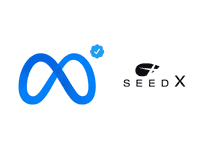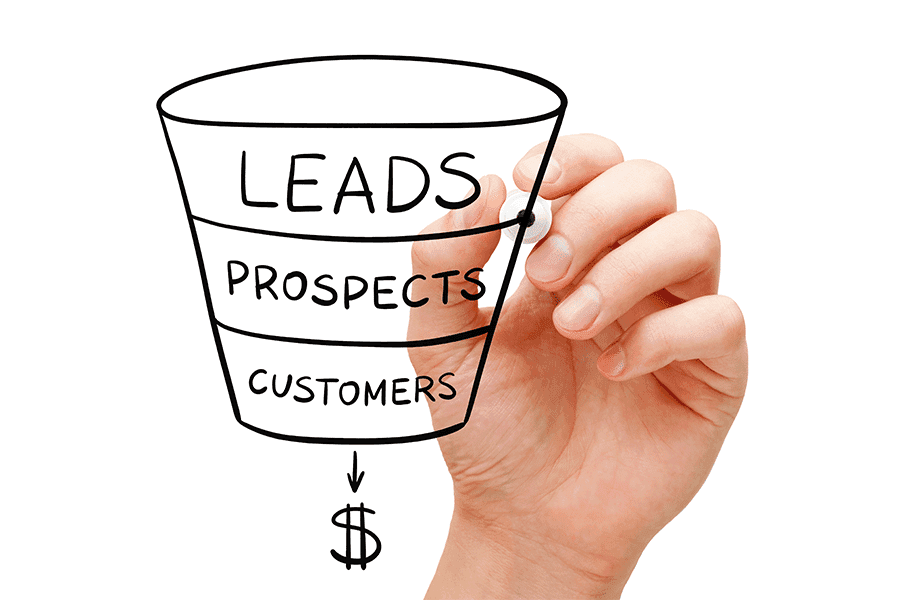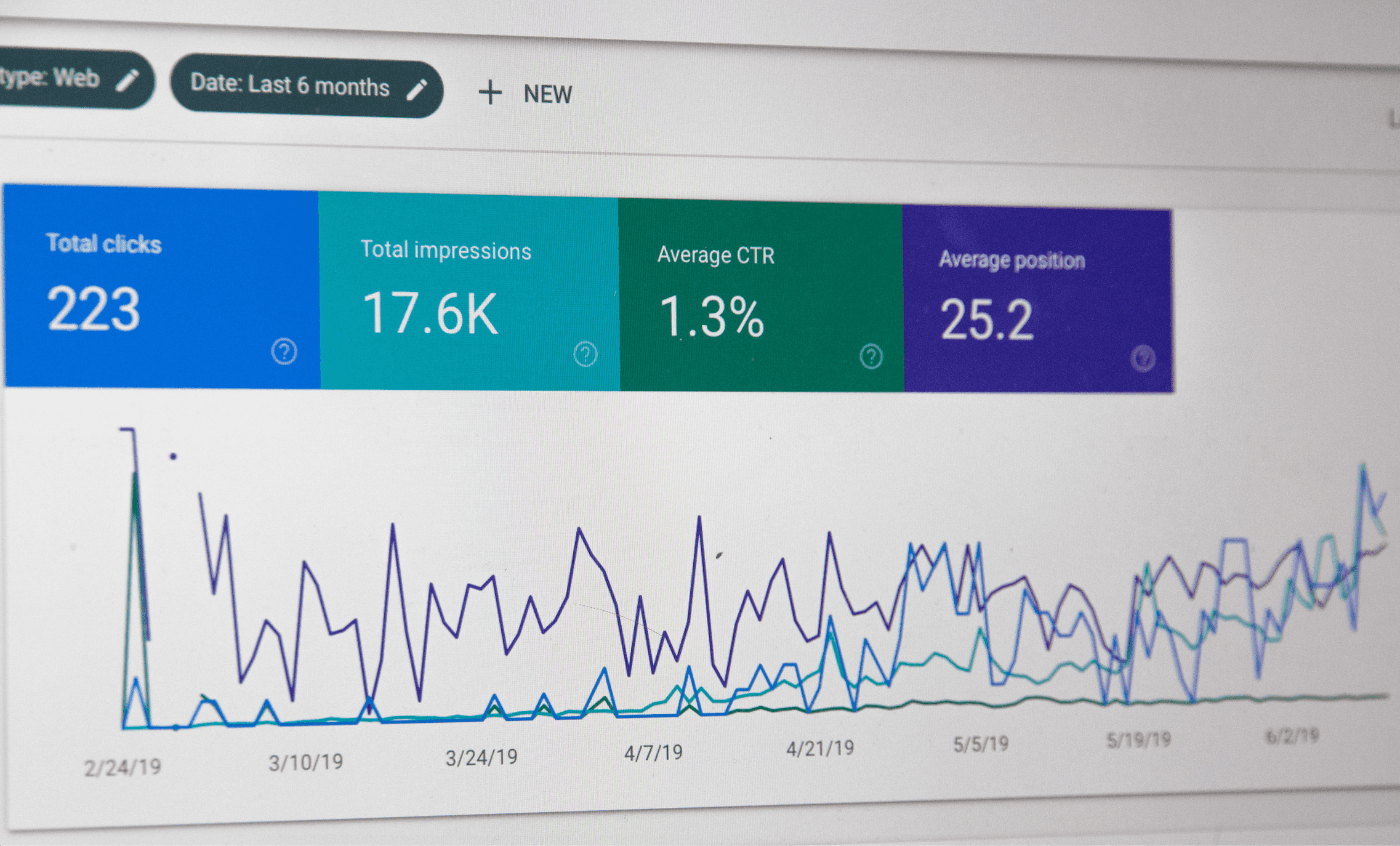Lead Nurturing Strategies for B2B and SaaS Companies: How to Turn Prospects into Customers

Understanding B2B and SaaS Companies
Best Lead Nurturing Strategies for B2B and SaaS Companies
Metrics to Track for Successful Lead Nurturing
Challenges in Lead Nurturing and How to Overcome Them
If you’re running a B2B or SaaS company, you know just how tough it can be to attract new leads. You put in countless hours creating a great product, optimizing your website, and crafting killer content, but it can still feel like you’re shouting into a void. The truth is, lead generation, while tasking in itself, is just the first step – the real challenge lies in turning those leads into loyal customers.
That’s where lead nurturing strategies come in.
In this blog, we’ll dive into some proven tactics that will help you build strong relationships with your prospects, boost your conversion rates, and ultimately grow your business. So grab a coffee, take a seat, and let’s get started!
What is Lead Nurturing?

Imagine you’re at a party, and you meet someone you’re interested in. You strike up a conversation, and things seem to be going well. But then, after a few minutes, they get distracted by someone else, and leave you standing there, feeling forgotten and unimportant. Not a great way to build a relationship, right?
Well, the same thing can happen when it comes to potential customers for B2B and SaaS companies. If you don’t nurture those relationships at every stage of the sales funnel, you risk losing those prospects to your competitors.
Lead nurturing is like being a good host at a party. You don’t just introduce yourself and then forget about your guests; you keep the conversation going, offer them snacks and drinks, and make sure they’re having a good time. In the same way, lead nurturing involves building relationships with potential customers by providing them with valuable content and personalized communication at every step of the way. By doing so, you can educate them, build trust, and ultimately guide them towards becoming loyal customers.
By investing in lead nurturing, B2B and SaaS companies can differentiate themselves from their competitors, build stronger relationships with potential customers, and ultimately increase their bottom line. It’s not just about making a sale; it’s about building a community of loyal customers who will keep coming back for more.
Understanding B2B and SaaS Companies

Simply put, Business-to-Business (B2B) marketing involves selling products or services to other businesses, while Business-to-Customer (B2C) marketing involves selling directly to individual consumers. B2B marketing is often more complex and requires a more personalized approach since businesses have different needs and decision-making processes compared to individual consumers.
For example, a B2B software provider that specializes in accounting software would be tailored to selling to accounting firms or finance departments within other businesses. In contrast, a B2C company for the same software would be geared towards individual consumers who are managing their personal finances.
SaaS, or Software-as-a-Service, is a software delivery model that allows businesses to access software applications through the internet. This means that users don’t need to download or install software on their computers, but can access it through a web browser or mobile app.
SaaS has become increasingly popular in recent years because it provides a cost-effective solution for businesses to access the latest software applications without the need for significant investment in hardware and maintenance.
For example, if you run a small business and need to manage your inventory, you can subscribe to a SaaS-based inventory management system for a few dollars every month instead of investing tens of thousands of dollars in a dedicated hardware and software solution tailor made for you.
The Sales Funnel in B2B & Software as A Service (SAAS)
We’ve briefly mentioned the sales funnel in the introduction, but you may be wondering what it is and why it would matter to you as in your B2B or SAAS marketing strategy.
The sales funnel is the backbone of any thriving B2B or SaaS marketing plan. It maps out the journey from first contact to conversion, forming the foundation for effective lead nurturing.
This funnel consists of four stages: Awareness, Interest, Consideration/Decision, and Action.

Each stage reflects a different mindset and goal for the customer.
Think of it like a journey to finding the perfect pair of shoes – first you become aware of the brand, then you become interested in a particular style, then you consider the price and quality, and finally, you take the action to buy.
The same process applies to your customers, and understanding the different stages of the funnel is key to turning prospects into loyal customers.
For B2B and SaaS companies, the sales funnel is especially important because unlike a consumer buying shoes, the sales process in these industries is no joke -it’s longer and more complex than the process you might see in Business-to-Consumer (B2C) companies.
Why, you might ask?
Well, B2B and SaaS companies usually offer higher-priced products or services, which means potential customers need to put a lot more thought into their decision-making process. It’s not like buying a new pair of shoes or a fancy new gadget – this is a serious investment that requires careful evaluation. Plus, in B2B and SaaS sales, you’re not just dealing with one decision-maker. You might have to navigate a whole group of people who need to be convinced that your product or service is the right choice. All this means that the sales cycle can drag on for months, or even years! And while this can be frustrating, it’s all worth it in the end when you close that big deal.
The Lead Nurturing Process

Lead nurturing is an essential process for B2B and SaaS companies to turn prospects into customers. It involves building relationships with potential customers and guiding them through the sales funnel towards a purchase. In this section, we’ll explore the various steps involved in the lead nurturing process, and how to execute them effectively.
Keep in mind that the main goal of the lead nurturing process is to build stronger relationships with your leads and guide them through the sales funnel towards a purchase.
● Defining Your Target Audience
Knowing your ideal customer and their needs is crucial for effective lead nurturing. As a B2B or SaaS company, you should have a clear understanding of who your target audience is and what their pain points are.
For instance, a B2B company selling marketing automation software will target marketing managers or decision-makers who need help generating leads. This information will help you create targeted content and communication that speaks to their specific needs.
● Creating a Lead Magnet
A lead magnet is an irresistible offer that provides value to your target audience and entices them to share their contact information. Examples of lead magnets include: ebooks, discount codes, free courses, checklists, and webinars. A lead magnet should be relevant to your target audience and align with their interests and pain points.
● Capturing Leads
Lead capture is the action that happens on your website when your visitors convert into leads. It is essential to provide an easy way for your website visitors to share their contact information. This can be achieved by offering a sign-up form or pop-up with a compelling lead magnet. For instance, an accounting software provider might have a sign-up form offering a free demo or consultation.
● Segmenting Your Leads
Segmenting your leads involves dividing them into groups based on interests, behaviors, or criteria, and personalizing your communication accordingly.
For instance, an email marketing software provider (SAAS) could segment leads by industry, company size, or marketing goals. This information will help you tailor your communication to their specific needs and interests.
● Personalizing Your Communication
Personalizing your communication involves using lead information to create targeted content that speaks to their specific needs.
For instance, an HR software provider might send targeted emails to leads addressing their pain points. Personalized communication can increase engagement and build stronger relationships with your leads.
● Scoring Your Leads
Scoring your leads involves prioritizing them based on their level of engagement and likelihood to convert.
For instance, a CRM software provider might give higher scores to leads requesting a demo or contacting sales. This information will help you prioritize your leads and focus your efforts on those who are most likely to convert.
● Nurturing Your Leads with the Right Content
Nurturing your leads involves providing relevant content to move them through the sales funnel. For instance, a project management software provider might send a lead to a case study on how similar companies used the software to increase productivity. This information will help your leads make an informed decision and move closer towards a purchase.
● Setting Up an Effective Lead Nurturing Workflow
Setting up an effective lead nurturing workflow involves automating emails, scheduling content, and assigning tasks to team members.
For instance, a social media management software provider might have a workflow that includes sending automated emails to leads who show interest in a particular feature. This information will help you streamline your lead nurturing process and ensure that no leads fall through the cracks.
Best Lead Nurturing Strategies for B2B and SaaS Companies

Lead nurturing is an essential part of the sales process for B2B and SaaS companies. It involves building relationships with potential customers over time to increase their interest and trust in your product or service, with the ultimate goal of converting them into paying customers. The following lead nurturing strategies can help B2B and SaaS companies turn prospects into customers:
● Drip Campaigns
Drip campaigns are automated email series sent to prospects over time. They can be used to educate prospects about your product or service, build trust, and maintain regular contact.
Drip campaigns are particularly effective in the early stages of the sales funnel, where prospects are still exploring their options and may not be ready to make a purchase.
For example, a SaaS company can send a drip campaign to a trial user with tips on software usage, highlighting key features and how to use them effectively.
● Webinars and Events
Webinars and events are a great way to engage with prospects and showcase your expertise.
They provide an opportunity to provide valuable information to prospects while building trust and credibility. Webinars and events are particularly effective in the middle stages of the sales funnel when prospects are looking for more detailed information about your product or service.
For example, a B2B company can host a free webinar on industry trends, sharing insights and tips with attendees.
● Personalized Email Marketing
Personalized email marketing uses data to personalize email content, making it more relevant and effective.
This approach can lead to higher engagement and conversion rates, as recipients feel that the content is tailored specifically to them.
Personalized email marketing is highly effective throughout the sales funnel and can be particularly useful in the earlier stages, where a company is still trying to build a rapport with a prospect.
For example, a B2B company can include the recipient’s name and company in the email’s subject and body, making the email feel more personal and tailored to their needs.
● Social Media Advertising
Social media advertising involves creating ads on social media platforms to target specific audiences.
This approach can be effective in driving traffic to your website or landing pages and increasing brand awareness.
Social media advertising is effective in the early stages of the sales funnel, where prospects are still exploring their options and may not be aware of your product or service.
For example, a SaaS company can create an ad on LinkedIn targeting HR managers with a pain point around employee retention, highlighting how their product can solve this problem.
● Retargeting Ads
Retargeting ads target prospects who previously visited your website or engaged with your content. It is a form of remarketing.
This approach increases brand recall and likelihood of conversion by keeping your brand top of mind for prospects who have already shown interest.
Retargeting ads are effective throughout the sales funnel, but are particularly useful in the later stages, where prospects may need a gentle nudge to make a purchase decision.
For example, a B2B company can target website visitors who did not complete a form with a retargeting ad, reminding them of the benefits of their product or service.
● Account-Based Marketing
Account-based marketing involves targeted marketing campaigns for specific accounts or companies.
This approach is effective for winning high-value accounts and closing deals faster by tailoring the messaging and content to the specific needs of the target account.
Account-based marketing is effective in the later stages of the sales funnel, where prospects are closer to making a purchase decision. For example, a B2B company can create a personalized campaign for a specific target account with personalized content and messaging, highlighting how their product can solve the target account’s pain points.
● Thought Leadership Content
Thought leadership content is a type of high-quality, educational content that showcases your company’s expertise and provides value to your prospects. It can be in the form of blog posts, whitepapers, ebooks, videos, podcasts, and more. By consistently creating thought leadership content, you can establish your brand as a trusted authority in your industry, build trust and credibility with your prospects, and ultimately drive more leads and sales.
The key to successful thought leadership content is to focus on providing real value to your audience. Your content should be informative, educational, and actionable. It should help your prospects solve their problems, answer their questions, and provide them with new insights and perspectives.
For example, a SaaS company that provides a project management tool might create a blog post on “5 Ways to Streamline Your Project Management Process” or a whitepaper on “The Top Trends in Project Management for 2023.” These types of thought leadership pieces are valuable to prospects who are searching for solutions to their project management challenges.
To make the most of your thought leadership content, you should also promote it across multiple channels. This can include social media, email marketing, and paid advertising. By sharing your content with a wider audience, you can increase its reach and drive more traffic to your website.
● Leverage SaaS Review Sites
SaaS review sites are online platforms that allow users to search for and compare different software solutions. They often provide lead generation opportunities for software companies by allowing them to create a profile and showcase their products or services to potential customers.
By getting listed on these sites and optimizing your profile, you can attract more leads and increase your visibility in the market. Some of the most popular SaaS review sites include G2, Capterra, Software Advice, and TrustRadius.
To make the most of these platforms, it’s important to have a strong profile that highlights the unique features and benefits of your product or service. You should also encourage your satisfied customers to leave reviews on these sites, as positive reviews can significantly increase your credibility and attract more leads to your business.
● Referral Programs to Generate SaaS Leads
Referral strategies are an effective way to generate B2B leads for your SaaS company. This involves encouraging your existing customers to refer new customers to your business in exchange for rewards or incentives.
By offering a referral program and making it easy for customers to refer others, you can generate a steady stream of high-quality leads for your business. Referral leads tend to be more qualified and have a higher conversion rate, as they are already familiar with your product or service and have been referred by someone they trust.
To create a successful referral program, you should offer rewards that are valuable and relevant to your customers. This could include discounts, free trials, exclusive content, or even cash rewards. You should also make it easy for customers to refer others by providing them with clear instructions and easy-to-use referral tools.
Overall, these lead nurturing strategies can be used at different stages of the sales funnel to effectively turn prospects into customers. You will be able to attract more leads, build trust and credibility, and ultimately drive more sales for your business.
Metrics to Track for Successful Lead Nurturing

Metrics are an essential part of measuring the success of your lead nurturing efforts. Here are some metrics that can help you track and improve your lead nurturing strategy:
● Click-Through Rates (CTR)
Tracking your Click-Through Rate (CTR) is crucial in determining the effectiveness of your ad campaigns. A high CTR means that your ad is engaging and appealing to your target audience.
For example, if you’re using email marketing to nurture leads, a high CTR can indicate that your subject line and email content are resonating with your audience.
● Conversion Rates
Conversion rates can help you understand how well your marketing channels are converting prospects into leads or customers.
By monitoring your conversion rates, you can identify which pages on your website need optimization to improve your lead nurturing process.
For example, if your pop up ad has a low conversion rate, it may be time to update the content or optimize the design to increase the chances of a visitor filling out a form.
● Time to Conversion
The time to conversion metric can help you measure the effectiveness of your lead nurturing process. If it takes too long for a lead to convert, it could be an indication that your nurturing process needs optimization.
For example, if it takes you 21 days between sending a follow up email and getting a response, you may need to personalize your communication to speed up the decision-making process.
● Engagement Rates
Engagement rates are a measure of the level of interest your content is generating among your target audience. A high engagement rate indicates that your content is resonating with your audience and is prompting them to take action.
For example, if your social media post has a high engagement rate(likes,retweets, comments etc.), it could mean that your content is useful and relevant to your target audience.
● Cost per Acquisition (CPA)
Cost per Acquisition (CPA) can help you measure the efficiency of your marketing campaigns and advertising spend.
By monitoring your CPA, you can identify which campaigns are generating the most leads or customers at the lowest cost.
For example, if your CPA is $5 for a $8 product, it may be time to adjust your ad targeting or optimize your landing page to improve the efficiency of your marketing spend.
Overall, the metrics you track will depend on which stage of the sales funnel you are targeting. By monitoring and optimizing these metrics, you can improve your lead nurturing strategy and turn more prospects into loyal customers.
Challenges in Lead Nurturing and How to Overcome Them

Lead nurturing is a crucial aspect of B2B and SaaS companies’ sales strategy. It involves building relationships with prospects to turn them into customers. However, there are some challenges that companies face when implementing lead nurturing strategies. Here are some common challenges and how to overcome them:
● Lack of Personalization
Don’t you get tired of receiving generic emails that don’t speak to your specific needs? Your leads do too! Personalization is key to building a strong relationship with potential customers. If you fail to personalize your lead nurturing campaigns, your leads may feel disconnected from your brand.
So, focus on creating personalized content for your leads by sending targeted emails, providing relevant content on your website, and using the lead’s name in all communication. By doing so, you can build a personal connection with your leads and show them that you understand their needs.
● Failure to Segment Leads
One of the biggest mistakes that B2Bs and SAAS companies make is not segmenting their leads based on their interests, behavior, or demographics.
Imagine receiving irrelevant information from a brand – would you still be interested in doing business with them? Probably not.
By segmenting leads, you can send them relevant content that is tailored to their specific needs, increasing the chances of conversion. So, don’t make this mistake! Segment your leads based on their interests and behavior to provide them with content that resonates with them.
● Figuring Out How Often to Contact Leads
Do you know the right frequency of communication with your leads?
Contacting leads too frequently can result in them losing interest, while not contacting them enough can cause them to forget about the brand. Finding the sweet spot is crucial.
Test different frequencies and analyze the response rates to determine the right frequency of communication with your leads. Consider the stage of the sales funnel as customers in the later stage are more open to frequent communication than those in the early stages.
● Lack of a Defined Lead Nurturing Workflow
Without a defined lead nurturing workflow, leads can get lost in the system, mixups can occur, and opportunities can be missed.
A defined lead nurturing workflow is crucial in ensuring that leads are nurtured efficiently.
Define a lead nurturing workflow that outlines how leads are handled from the moment they come in until they are converted. This ensures that all leads receive consistent and relevant communication throughout the nurturing process.
● Not Measuring the Effectiveness of Lead Nurturing Strategies
Measuring the effectiveness of lead nurturing strategies is essential in determining the success of the campaign. You want to identify what is working and what needs improvement, so you can optimize your lead nurturing campaigns.
Set up metrics to measure the effectiveness of any lead nurturing campaigns, including tracking the open and click-through rates of emails, monitoring website traffic, and analyzing the conversion rates of leads.
● Slow Response Time
A delay in response can result in the lead losing interest in the brand or moving on to a competitor. Don’t let that happen to you!
Ensure a quick response time by setting up an automated response system that acknowledges the lead’s interest and informs them when they can expect a response from the sales team.
● Failing to Follow Up
Following up with leads is crucial in lead nurturing. Failing to follow up can result in missed opportunities and lost revenue.
So, make sure you follow up with your leads and keep them engaged throughout the nurturing process.
Set reminders to follow up with leads at regular intervals, and don’t be afraid to pick up the phone to have a conversation with them.
Final Thoughts

Lead nurturing plays a vital role in building trust and relationships with potential customers for B2B and SaaS companies.By providing value at every stage of the sales funnel, businesses can increase the likelihood of converting leads into paying customers.
So, take the time to develop a comprehensive lead nurturing strategy, implement it with care and always be measuring and optimizing your efforts. With the right approach, you can turn your leads into loyal customers who will support and advocate for your business for years to come.
It’s crucial to take a comprehensive approach to lead nurturing, continuously optimizing your efforts for maximum effectiveness. At SeedX, we specialize in helping B2B and SaaS companies grow through effective marketing and lead generation strategies. Our team of talented professionals has been recognized by Forbes as one of the best marketing agencies in the industry. We understand the challenges and opportunities of lead nurturing and are equipped to help you achieve your marketing goals. Contact us today to learn how we can help your business thrive.








